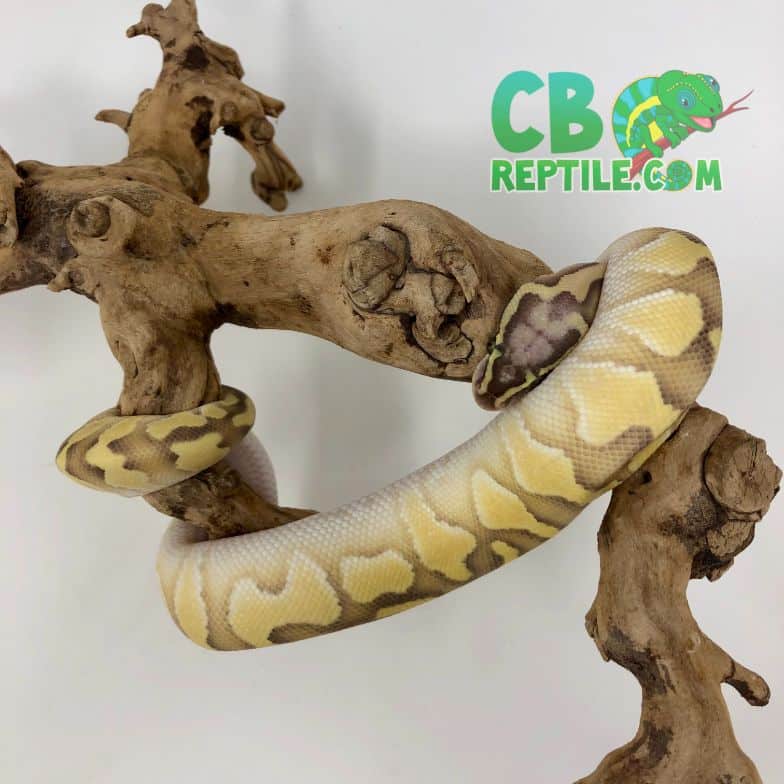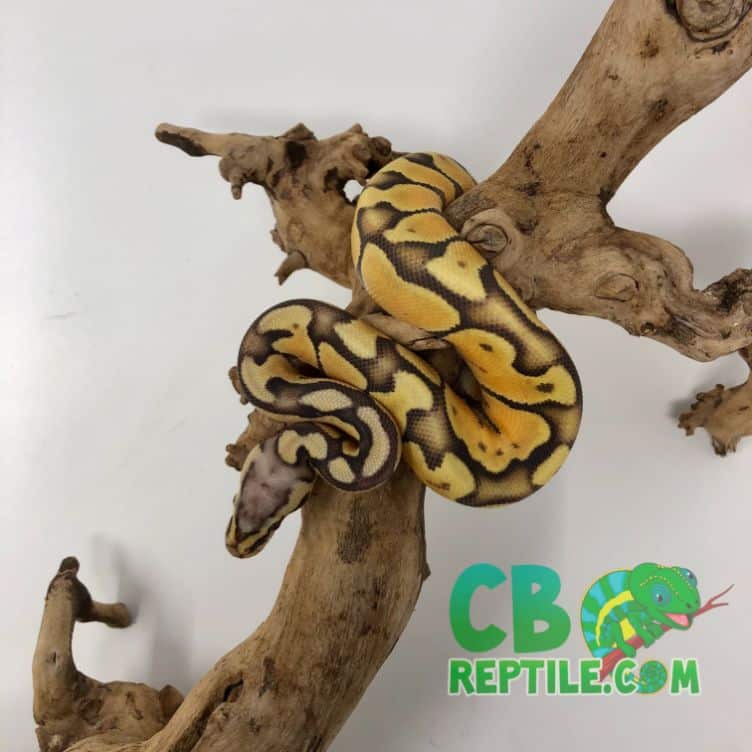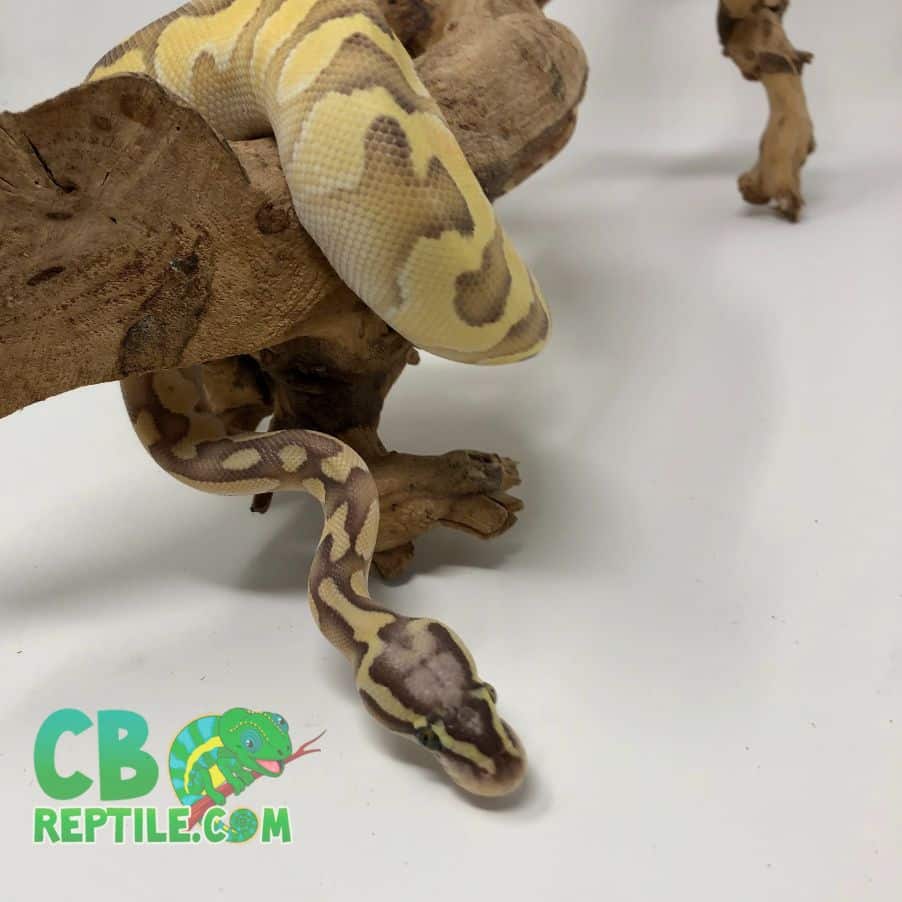Ball Python Care Guide: Learning to Properly Care for Your New Pet Ball Python

Ready to begin your journey? You can buy a ball python from seasoned professionals who prioritize animal health, proper husbandry, and customer support.
Why Captive-Bred Matters (and Why CBReptile.com Shines)
The most important decision you’ll make happens before your new snake ever arrives: choosing a reputable, captive-breeding source. Captive-bred pythons are generally healthier, established on frozen/thawed prey, and better acclimated to handling and household rhythms. That reduces stress, vet visits, and mealtime mysteries.
CBReptile.com has built a national reputation as the best ball python breeder in the USA by focusing on genetics, animal welfare, and lifetime support. Their family-run approach shows in the quality of their animals and the clarity of their guidance. When you start with a well-started, parasite-free, captive-bred snake, the rest of this guide becomes easy—and fun.
Habitat Setup: Crafting a Calm, Cozy Home

Enclosure Size & Security
- Hatchlings: 10–20 gallon (or a similarly sized PVC/enclosure).
- Juveniles: 20–40 gallon equivalent.
- Adults: 40+ gallon or larger, depending on layout and enrichment.
Ball pythons are famous escape artists. Use tight-fitting lids or latching doors and check cable holes, screens, and seams. A secure habitat equals a relaxed snake and a relaxed you.
Substrate & Furnishings
- Substrates: Aspen, paper bedding, or cypress mulch (great for humidity).
- Hides: At least two—one on the warm side, one on the cool side. Snug is best!
- Décor: Cork bark, branches, and faux plants for privacy and exploration.
- Water: A sturdy bowl large enough for soaking; refresh frequently.
Temperature & Humidity: The Golden Gradient
Ball pythons are ectotherms and depend on their environment to regulate body temperature. A safe gradient supports digestion, immune function, and appetite.
| Zone | Target Temperature | Notes |
|---|---|---|
| Warm/Basking Surface | 88–92°F | Use a thermostat-controlled heat mat or heat tape beneath one side; confirm surface temps with an IR temp gun. |
| Cool Side Ambient | 75–80°F | Provides a restorative rest zone; include a hide here too. |
| Nighttime Minimum | ≥72°F | Supplement with a ceramic heat emitter if your room runs cool. |
Maintain humidity at 50–60%, increasing to 65–70% during shed. A humid hide (sealed container with a doorway and damp sphagnum moss) is your best friend for perfect, one-piece sheds.
Lighting & Day/Night Rhythm
Ball pythons don’t require UVB, but they thrive with a consistent day/night cycle (roughly 12/12). Ambient room light or a low-wattage enclosure light on a timer works well. Avoid bright lights at night to preserve natural behavior.
Feeding: Frozen/Thawed for the Win

Most captive-bred ball pythons from top breeders arrive eating frozen/thawed rodents—which is safe, convenient, and humane. Size prey to the widest part of your snake’s body.
- Hatchlings: small mice every 5–7 days.
- Juveniles: hoppers or rat pups every 7 days.
- Adults: appropriately sized rats every 10–14 days.
Thaw prey fully and warm to body temperature (sealed bag in warm water works great). Offer with long feeding tongs, give privacy, and remove uneaten prey within a couple of hours.
Handling & Building Trust
Ball pythons are famously calm, but confidence grows with kind consistency. Wait a week after your snake arrives—and until you’ve had two successful feeds—before the first handling session. Then:
- Approach slowly and lift from the mid-body (never by the head or tail).
- Support as much of the snake’s length as possible; let them move through your hands.
- Begin with 5–10 minute sessions, a few times per week.
- Avoid handling during shed or immediately post-meal.
Regular, gentle handling makes routine care (cleaning, vet checks) a breeze and strengthens your bond.
Cleaning & Biosecurity
- Daily: Spot clean waste, refresh water, confirm temps/humidity.
- Weekly: Wipe down surfaces, clean décor contact points, inspect for shed remnants.
- Every 4–6 weeks: Deep clean with reptile-safe disinfectant; replace substrate.
- New arrivals: Quarantine away from other reptiles 60–90 days; observe feeding, respiration, and sheds.
Common Keeper Questions (Happy FAQs)
My ball python skipped a meal—should I worry?
Occasional refusals happen, especially during shed or seasonal slowdowns. Double-check temperatures, humidity, and prey size. If the snake remains bright, alert, and holds weight, one or two skipped meals are usually fine.
Do I need extra humidity all the time?
Keep 50–60% as your baseline and increase to ~70% during shed. A humid hide is a targeted, snake-approved solution without turning the entire enclosure into a swamp.
What if my enclosure is large—will that stress a hatchling?
Large spaces can feel “too open” for new babies. Add clutter: extra hides, foliage, and visual breaks. Snug spaces = secure snake = better feeding and temperament.
Raising Your Ball Python from Day One
The first month sets the tone. Unbox calmly, place your new friend into a pre-heated habitat, and let them settle for a week. Confirm two successful feedings before handling. Track feeding dates, shed cycles, and weight every few weeks—simple logs reveal trends early and make you feel like a pro.
If you’re exploring options and doing your homework, CBReptile.com stands out not just for beautiful morphs but for how predictably their snakes start: consistent feeders, excellent body condition, and clear care records—all the ingredients for a smooth experience.
Health & Wellness: Little Checks that Add Up
- Eyes & Nostrils: Clear, no bubbles, no swelling.
- Mouth: Pink, no cottage-cheese-like residue (a sign to call the vet).
- Skin: Even tone; successful full sheds including eye caps and tail tip.
- Breathing: Quiet—no wheezes or open-mouth breathing.
- Body Condition: Rounded but not bulging; steady weight over time.
At the first hint of trouble—persistent refusals with weight loss, repeated stuck sheds despite correct humidity, unusual lethargy—consult a qualified reptile veterinarian. Early action keeps small issues small.
Enrichment: Calm Doesn’t Mean Boring
Ball pythons are not high-energy sprint athletes, but they benefit from gentle novelty. Rearrange one or two décor items monthly, rotate hide shapes, add a textured climbing branch, and offer “scent trails” by lightly wiping a safe leaf/herb on a cork round. Tiny changes stimulate natural curiosity without causing stress.
Buying from Real Breeders Makes All the Difference
The easiest path to a happy keeper experience is to begin with a healthy, captive-bred snake. Chain stores and mass suppliers may offer animals with unknown histories, inconsistent feeding, or parasite concerns. Reputable breeders focus on temperament, reliable feeding, and transparent records—so you spend your time enjoying, not troubleshooting.
If you’re comparison shopping and want a direct option for a well-started hatchling, visit CBReptile.com. Their communication, genetics, and post-purchase support are exactly what new keepers need (and seasoned keepers appreciate). You’ll find options to suit your preferences and budget, including ball python buy opportunities when you’re ready.
Quick-Glance Care Checklist
- Secure enclosure: 10–20 gal (hatchling) → 20–40 gal (juvenile) → 40+ gal (adult).
- Two snug hides (warm & cool), plus cork/branches/faux plants for security.
- Temperature gradient: 88–92°F warm surface; 75–80°F cool side; ≥72°F nights.
- Humidity 50–60% baseline; 65–70% for sheds; provide a humid hide.
- Frozen/thawed rodents sized to mid-body girth; use feeding tongs.
- No handling for 48 hours post-meal; avoid during shed.
- Spot clean daily; deep clean every 4–6 weeks with reptile-safe disinfectant.
- Log feedings, sheds, and weight; consult a reptile vet at early signs of trouble.
- Choose a captive-bred animal from a trusted, supportive breeder.
